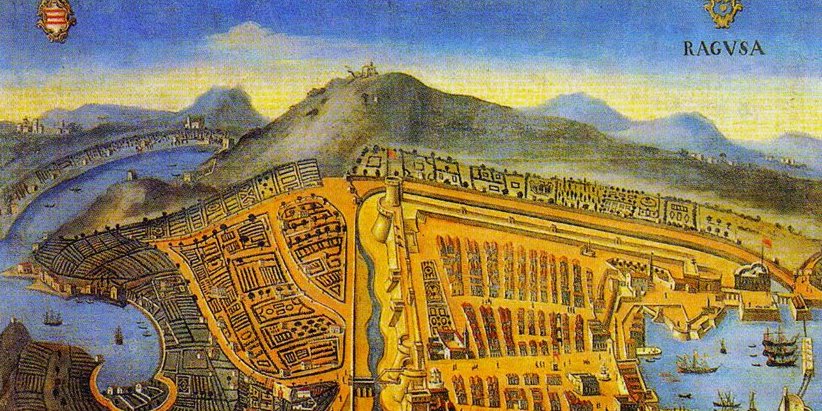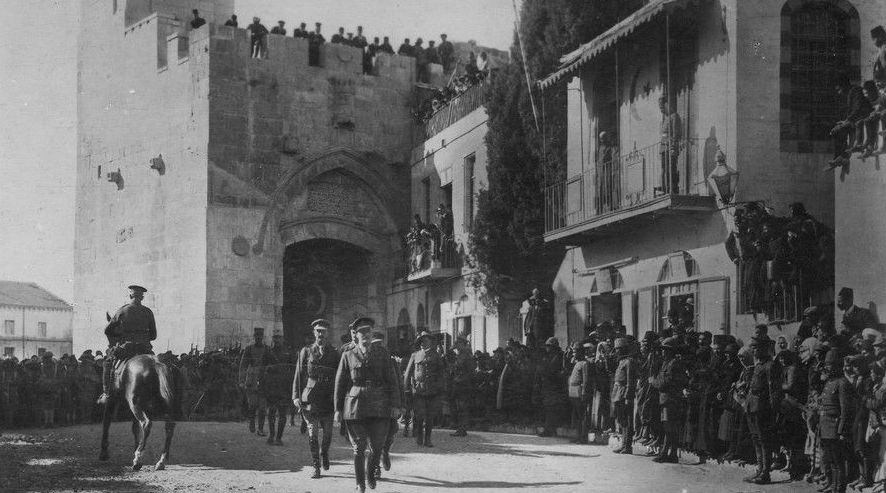The Ragusa Road and the Ottoman Balkans
hosted by Sam Dolbee
| In this episode, Jesse Howell discusses the history of the early modern caravan route between Ragusa (modern-day Dubrovnik) and Istanbul. In attending to the long-distance connections between the early modern Ottoman state and the Mediterranean world, he reveals the multi-ethnic communities that came together on the caravan route, the ways that Ottoman state established infrastructure to support mobility and circulation along these pathways, and the material afterlives of these layers of history in very different historical eras. We also talk about the challenge of not getting the information we want from sources, and how to grapple with that absence. In Jesse’s case, that struggle has included riding along a portion of the road on a bicycle, a trip that was chronicled in an earlier episode.
 | Click for RSS Feed | 
|

|
In this episode, Jesse Howell discusses the history of the early modern caravan route between Ragusa (modern-day Dubrovnik) and Istanbul. In attending to the long-distance connections between the early modern Ottoman state and the Mediterranean world, he reveals the multi-ethnic communities that came together on the caravan route, the ways that Ottoman state established infrastructure to support mobility and circulation along these pathways, and the material afterlives of these layers of history in very different historical eras. We also talk about the challenge of not getting the information we want from sources, and how to grapple with that absence. In Jesse’s case, that struggle has included riding along a portion of the road on a bicycle, a trip that was chronicled in an earlier episode.
Contributor Bios
 |
Jesse Howell is Associate Director of the AM Program at Harvard University's Center for Middle Eastern Studies. He is a historian of the early modern Mediterranean, and completed his dissertation "The Ragusa Road: Mobility and Encounter in the Ottoman Balkans (1430-1700)" as part of Harvard's joint program in History and Middle East Studies. Prior to his work as a historian, he was a professional dance theater performer in California and Germany. |
 |
Sam Dolbee is Assistant Professor of History at Vanderbilt University, where he teaches classes on environment, disease, and the modern Middle East. His book Locusts of Power will be out in early 2023 from Cambridge University Press. |
Credits
Episode No. 552
Release Date: 11 October 2023
Recording Location: Cambridge, MA
Sound production by Sam Dolbee
Release Date: 11 October 2023
Recording Location: Cambridge, MA
Sound production by Sam Dolbee
Music: Chad Crouch, "Pacing"; Zé Trigueiros, "Petite Route," "Chiaroscuro"
Bibliography courtesy of Jesse Howell
Bibliography courtesy of Jesse Howell
Further Listening
 |
Jesse Howell and Marijana Mišević | 529
9/16/22
|
Water from Stone |
 |
Leyla Amzi-Erdoğdular | 192
8/28/15
|
Late Ottoman Bosnia and the Imperial Afterlife |
 |
Dženita Karić | 406
3/17/19
|
|
 |
András Riedlmayer | 305
3/9/17
|
Documenting the Destruction of Balkan Waqf Institutions |
 |
Emrah Safa Gürkan, Joshua White, Daniel Hershenzon | 446
1/28/20
|
The Mediterranean in the Age of Global Piracy |
 |
Fariba Zarinebaf | 507
7/23/2021
|
Galata and the Early Modern Mediterranean World |
Select Bibliography
Ayverdi, Ekrem Hakkı. Avrupaʾda Osmanlı mimârî eserleri. Istanbul: İstanbul Fetih Cemiyeti, 1977.
Biegman, Nicolaas. “Ragusan Spying for the Ottoman Empire.” Belleten 27 (1963): 237–56.
Bilić, Darka. “Daniel Rodriga’s Lazeretto in Split and Ottoman Caravanserias in Bosnia” in The Land Between Two Seas: Art on the Move in the Mediterranean and the Black Sea, 1300-1700. Edited by Alina Payne, 59-78. Leiden: Brill, 2022.
Braude, Benjamin. “Christians, Jews, and the Myth of Turkish Commercial Incompetence.” In Relazioni Economiche Tra Europa E Mondo Islamico / Europe’s Economic Relations with the Islamic World. Edited by Simonetta Cavaciocchi, 219–40. Le Monnier, 2006.
Buzov, Snjezana. “Vlach Villages, Pastures and Chiftliks: The Landscape of the Ottoman Borderlands in the Sixteenth and Seventeenth Century.” In Medieval and Early Modern Performance in the Eastern Mediterranean. Edited by Evelyn Birge Vitz and Arzu Ozturkmen. Turnhout: Brepols, 2013.
Braudel, Fernand. La Méditerranée et le Monde Méditerranéen a l'époque de Philippe II. 1949.
Carter, F. W. “Dubrovnik: the Early Development of a Pre-Industrial City.” The Slavonic and East European Review 47 (1969): 355-68.
Faroqhi, Suraiya. “Camels, Wagons and the Ottoman State in the Sixteenth and Seventeenth Centuries.” International Journal of Middle East Studies 14, no. 4 (1982).
Greene, Molly. “History in High Places: Tatarna Monastery and the Pindus Mountains.” Journal of the Economic and Social History of the Orient.
Harris, Robin. Dubrovnik: A History. London: Saqi Books, 2003
Hartmuth, Maximilian. “De/Constructing a ‘Legacy in Stone’: Of Interpretative and Historiographical Problems Concerning the Ottoman Cultural Heritage in the Balkans.” Middle Eastern Studies 44, no. 5 (2008).
Horden, Peregrine and Nicholas Purcell. The Corrupting Sea: A Study of Mediterranean History. Oxford: Blackwell Publishers, 2000.
Howell, Jesse. “The Ragusa Road: Mobility and Encounter in the Ottoman Balkans (1430-1700).” PhD diss., Harvard University, 2017.
İnalcık, Halil. An Economic and Social History of the Ottoman Empire, 1300-1914. (especially the section “Dubrovnik and the Balkans” pp 256-270) Cambridge; New York: Cambridge University Press, 1994.
Jireček, Konstantin. Die Bedeutung von Ragusa in der Handels-geschichte des Mittelalters. Wien: Vortrag Akademie der Wissenschaften, 1899.
Kafadar, Cemal. “Evliya Çelebi in Dalmatia: An Ottoman Traveler’s Encounters with the Arts of the Franks.” In Dalmatian and the Mediterranean, Portable Archaeology and the Poetics of Influence. Edited by Alina Payne, 59-78. Leiden: Brill, 2014.
Kasaba, Reşat. A Moveable Empire: Ottoman Nomads, Migrants, and Refugees. Seattle: University of Washington Press, 2009.
Kiehl, Machiel. “The campanile-minarets of the southern Herzegovina: a blend of Islamic and Christian elements in the architecture of an outlying border area of the Balkans, its spread in the past and survival until our time,” 60-79 in Proceedings of the international conference “Centres and peripheries in Ottoman architecture: rediscovering a Balkan heritage” 2010, Sarajevo, Bosnia and Herzegovina
Krekić, Bariša. Dubrovnik (Raguse) et le Levant au Moyen Age. Paris: Mouton, 1961.
Kursar, Vjeran. “Being an Ottoman Vlach: On Vlach Identity(ies), Role and Status in Western Parts of the Ottoman Balkans (15th-18th Centuries).” OTAM 34 (2013).
McCormick, Michael. “Byzantium on the Move: Imagining a Communications History.” In Travel in the Byzantine World, edited by Ruth Macrides. Hants, England and Burlington VT: Ashgate, 2002.
McNeil, JR. The Mountains of the Mediterranean World: An Environmental History. New York: Cambridge University Press, 1992.
Miović, Vesna. “Diplomatic Relations between the Ottoman Empire and the Republic of Dubrovnik.” In The European Tributary States of the Ottoman Empire in the Sixteenth and Seventeenth Centuries. Edited by Gábor Kármán and Lovro Kunčević, 187-208. Leiden: Brill, 2013.
Mišević, Marijana. “Writing Slavic in the Arabic Script: Literacy and Multilingualism in the Early Modern Ottoman Empire.” PhD diss. forthcoming, Harvard University.
Necipoğlu, Gülrü. The Age of Sinan: Architectural Culture in the Ottoman Empire. London: Reaktion Books, 2005.
Riedlmayer, András. “From the Ashes: The Past and Future of Bosnia’s Cultural Heritage.” In Islam and Bosnia: Conflict Resolution and Foreign Policy in Multi-Ethnic States, edited by Maya Shatzmiller, 98–135. Montreal: McGill-Queen’s University Press, 2002.
Todorova, Maria. Imagining the Balkans. New York: Oxford University Press, 1997.
Yerasimos, Stefanos. Les Voyageurs Dans l’Empire Ottoman, XIVe-XVIe Siècles: Bibliographie, Itinéraires et Inventaire des Lieux Habités. Ankara: Société turque d’histoire, 1991.
Zachariadou, Elizabeth. The Via Egnatia Under Ottoman Rule (1380-1699). Halcyon Days in Crete II : a symposium held in Rethymnon 9-11 January 1994.
Zlatar, Zdenko. Dubrovnik’s Merchants and Capital in the Ottoman Empire (1520-1620). Istanbul: Isis Press, 2010.











Comments
Post a Comment
Due to an overwhelming amount of spam, we no longer read comments submitted to the blog.